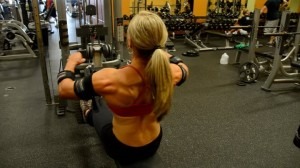
Sports Massage Techniques
Part two of the Sports Massage series looks at the techniques involved, and gives some statistics on why pro athletes use Sports Massage to stay fit and healthy. For the complete article click on this link
Common Sports Massage Techniques
Every massage therapist has specific techniques that they prefer to use in sports massage sessions, but there are a few basic types which are commonly used to help treat the athlete client. A comprehensive review published in the Journal of Sports Medicine and Physical Fitness breaks them down into five general categories, which are:
- Effleurage. The review shares that the strokes used in effleurage, which are of varying pressure and applied consistent with lymph and venous flow, are intended to “relax the client, warm the tissue, assist circulation and tissue drainage, stretch muscle and fascia, and soothe painful or sore areas.”
- Petrissage. This kneading technique can be used to either relax or stimulate the athlete’s muscle, but it also provides additional benefits, such as those related to improved circulation and enhanced removal of metabolic waste.
- Tapotement. By using “repetitive light striking movement to the skin with the ulnar portion of hands or with hands in a cupped position,” this review shares that the therapist can provide energy and stimulation to the athlete’s muscle tissues.
- Friction. Friction massage, the type of sports massage in which strokes are applied in circular or linear motion, is intended to help the athlete by creating an inflammatory response, thus breaking down and separating scar or adhered tissues.
- Vibration. Used in pre-event massage sessions, vibration works by shaking the target muscle groups, a movement that promotes relaxation and improved circulation.
This review goes on to explain that sports massage sessions can also involve the use of “more specialized techniques.” These particular techniques are often dictated by whether the massage is provided before or after the event, but often include the use of compressive strokes, jostling strokes and broad circular friction.
Levels of Sports Massage
Providing sports massage services offers the therapist the ability to work with people of all ages and skill levels. For instance, according to the National Collegiate Athletic Association (NCAA), there are almost eight million high school students currently playing sports. 
An additional 249,154 male and 175,553 female athletes compete at the collegiate level, playing for their college or university in baseball, basketball, cross country, football, hockey, soccer and various other competitions.
Combine these with the 4,146 active players in the NFL (National Football League) MLB (Major League Baseball), NBA (National Basketball Association), NHL (National Hockey League) and MLS (Major League Soccer); the 244 Olympic athletes on Team USA who competed in the 2018 Winter Games; and all of the “weekend warriors” who play sports on a more sporadic basis and this represents a huge number of individuals who rely on their bodies to consistently perform at higher levels.
According to the Bureau of Labor Statistics, the mean annual income for an athlete in spectator sports is $104,900. Pro sport wages can easily enter the millions, with some players contracted for 10 or more times that amount.
So, although some athletes play for fun, others engage in sports activities as a way to earn a living for themselves and their families, making their total health and wellness even more critical.
Either way, it’s important for athletes of all levels and engaged in all sports to develop and maintain a fit body. This goal can be accomplished via a well-designed health and wellness regimen, and receiving regular sports massages is a beneficial part of this type of program.
Sports Massage Versus Other Types of Massage
What makes a sports massage different than other types of massages available to athletes and non-athletes alike?
A sports massage, which is often called an orthopedic massage or clinical massage, “does involve deep work,” says Waslaski, “but it also involves looking at injuries, performance enhancement and recovery.” That’s why he stresses the importance of massage therapists in the sports space learning orthopedic assessment.

McElroy adds that another difference between sports massage and other massage therapies is “the feedback necessity that goes on in sports massage work.” She goes on to explain that “the athlete is actively engaged in the work, whether that’s verbal cues on pressure or information on the cause or the onset of the pain.”
And if you’re working with an athlete who is participating in a formal training program, feedback is often provided there as well.
One factor that changes for Pietrunti when performing sports massage versus other types of massage is the client intake.
“To start, I use a few different movement screens that I add in addition to my general intake,” he says. “This allows me to see how the client moves relative to their needs and gives me a baseline for tracking improvement over multiple sessions.”
This additional screening enables Pietrunti to customize his treatment plan to better suit the individual athlete. “I employ a variety of joint mobilizations, muscle energy techniques and stretches based on the movement patterns for each client’s needs,” he says.
Pietrunti also shares that he is often “more vigorous and dynamic” when providing sports massage versus other types of massages. “I use a lot of deeper techniques,” he says, “as well as some Tui Na hand techniques and other eastern modalities that allow me to move in a more rhythmic fashion.”
Pietrunti says he also uses “little to no lubricant” when performing these sessions, and the client is completely clothed in loose workout gear.
Check back for the final installment of the Guide to Sports Massage from Massage Magazine
Cade Holmseth is a professional athlete who well understands the power of Sports Massage to keeping healthy and fit. His massage therapy business, Hands of Health Bodywork, has helps athletes and “regular folks” get the most out of life and feel terrific.